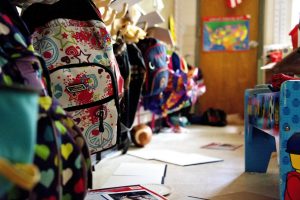Transition times are important to the overall flow of the classroom. Whenever a caregiver says to me “I have such a hard time getting the children to sit down for lunch or to clean up before we go outside” My first question is what is your transition activity? Teachers and children should have a segue from one active to the next; this is called your transition time.
A transition time is when the children move from one activity to another, such as inside to outside, returning to the classroom, classroom to gross motor room (gym, cafeteria, multipurpose room), activity to meal time (breakfast, snack, or lunch), free play to circle time, free play to small group activity, free play to story time, nap time to activity, and any activity to clean-up.
Transition times happen at various periods throughout the day. Some children recognize transition periods because they are clearly defined by the teacher and in other situations, there is not a well-defined transition period and the children are not clear as to what is expected of them. When transition times are not defined and organized, teachers and children tend to become frustrated during these periods. When teachers are frustrated, the children are not provided with clear direction and mistakes can, and often are, made.
One of the major mistakes that happens during transition periods are children are left in the classroom, outside on the playground, or in the gym. Teachers should make sure that they are counting the children before they leave any area. Teachers should have the children line up by singing a song or fingerplay with activities to count the children with a name-to-face. This will ensure that all the children are accounted for before they leave the area. This will also reduce the amount of times that children are left unsupervised by mistake.
Have a clean-up song and transition activity that allows the children to know that they are changing activities. Have the children sing the same clean up song regularly, have a count down before clean-up will begin, and let the children know what activity will be following clean up. Such as, we will be cleaning up in 3 minutes for circle time. The children should know that they are clean-up in preparation for the next activity. Allow enough time for clean up so that you are not feeling the need to clean up the areas to expedite the process.
If you are cleaning up for circle time have the children sit on the carpet once their area is clean. While they are on the carpet have them sing the clean-up song. The children could also help their friends to finish cleaning up the other areas. The teacher could start circle time while the other children are finishing up cleaning. The children can join circle time when they are finished cleaning. Remember that it is ok for children to join an activity; not all children have to be finished before another activity can be started. This is also true for meal times. Is it fair to the children that are finished eating to have to wait for their friends at the table before they can go on to the next activity? Also, should children have to wait for all the children to have their food before they can start to eat? Where this is a very polite trait to have, it’s not fair for the children that are hungry with food sitting in front of them to not be able to eat. Having a well-organized transition period will reduce frustration and mistakes therefore, keeping children safe. This can be accomplished through songs, fingerplay and movements during transition times.

